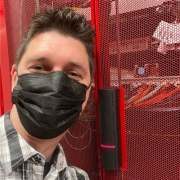What is our primary use case?
Primarily, I use it to monitor the uptime of all equipment, as well as network connectivity, availability, and the services running on those devices. I believe those are the key aspects I've found useful.
What is most valuable?
The network monitoring feature, especially, stands out to me. We needed a tool that could indicate which devices are up or down, and I believe Nagios Network Analyzer is the best option for that. It provides detailed reports and helps me stay on top of things. Moreover, it has the ability to detect errors before a device goes down, which is simply awesome.
What needs improvement?
There is room for improvement on the setup side. It's not very user-friendly, especially for those who aren't tech-savvy. I find it a bit hard to set up initially. It could be done better to make it easier to configure. It would be beneficial for users.
For additional features, I have an idea. I'm not sure if it's already there, but it would be great to have a feature that maps the network and shows which devices are connected. It could provide information about how traffic flows and offer a visual representation of how devices are physically connected to each other. It would be like a network audit feature that displays the connections between switches and other devices. So, in future releases, a network mapping and visualization feature would be valuable.
For how long have I used the solution?
I have been using Nagios for more than a year.
What do I think about the stability of the solution?
It's very stable. Occasionally, there may be delays in generating reports, and there have been a few instances where it incorrectly shows a device as online when it's actually offline or vice versa. But these occurrences are infrequent, so overall, it's very stable.
What do I think about the scalability of the solution?
I would rate the scalability an eight out of ten. You can add unlimited devices, and it allows for different types of devices to be included, which makes it quite good.
We currently monitor around 40 devices through Nagios Network Analyzer.
How are customer service and support?
The customer service and support team is good. Whenever I needed assistance, they were responsive and provided the necessary guidance. I haven't had to personally contact anyone for help as the support resources were comprehensive.
How was the initial setup?
From my experience, I would rate my experience with the initial setup an eight out of ten, where ten represents a very easy and simple setup, and one represents a complex setup.
The documentation could be more helpful, and the setup process could be designed in a way that provides more guidance. However, I appreciate that it allows users to learn as they go, which is why I rate it higher.
What about the implementation team?
The deployment was done by me. I followed the documentation, although it was a bit new to me.
What's my experience with pricing, setup cost, and licensing?
I'm using the free version, so I would say it's cheap. I haven't explored the paid options.
Which other solutions did I evaluate?
Based on the ones I've tested, such as Spiceworks and ManageEngine, I found Nagios Network Analyzer to be superior. With Spiceworks, the interface was confusing, and I couldn't get it to work properly. ManageEngine had difficulties in getting devices monitored. However, I haven't tried any other products apart from these. When I deployed Nagios, it worked well for me.
What other advice do I have?
In general, I'm satisfied with Nagios Network Analyzer. It has provided me with useful features, and the setup experience has been smooth. It runs well on a virtual machine without demanding too many resources. The accessibility is good, and the interface is good. I would rate it around eight out of ten.
Which deployment model are you using for this solution?
On-premises
*Disclosure: I am a real user, and this review is based on my own experience and opinions.








